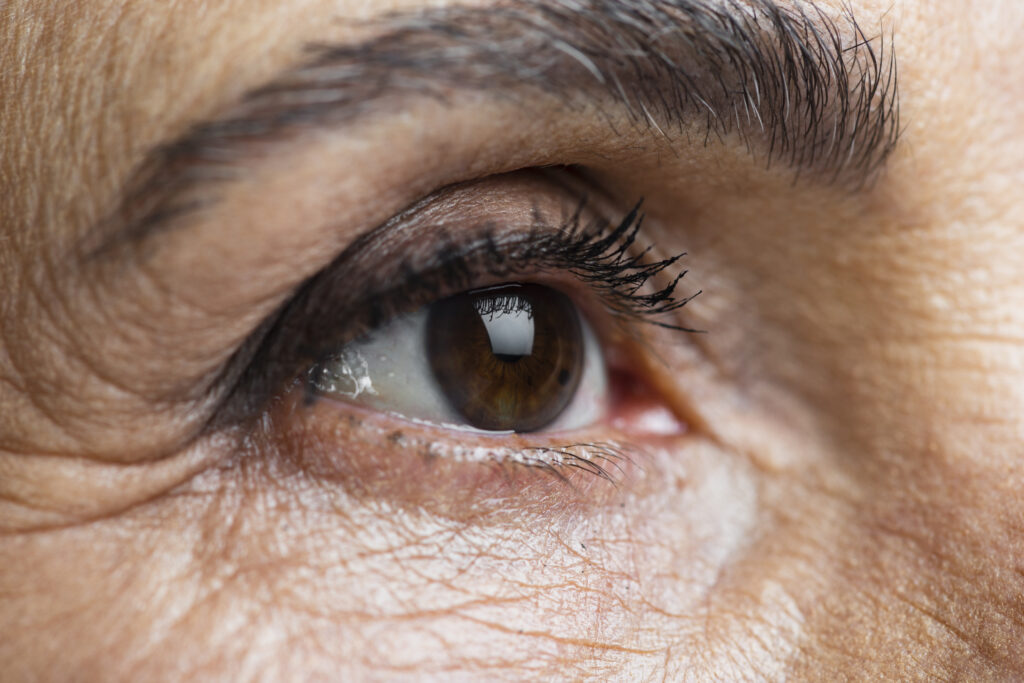AR is Brightening Lives: Exploring the Retina and Age-Related Macular Degeneration
 Visual impairments affect millions of people in the U.S., significantly impacting their daily lives. Among these impairments, Age-Related Macular Degeneration (AMD) is a leading cause of vision loss, particularly in individuals over 60. With an estimated 6 million people in the U.S. living with intermediate and late-stage AMD as of recent data from around 2020 to 2021, understanding how this condition affects the retina and exploring emerging technologies that offer hope is crucial.
Visual impairments affect millions of people in the U.S., significantly impacting their daily lives. Among these impairments, Age-Related Macular Degeneration (AMD) is a leading cause of vision loss, particularly in individuals over 60. With an estimated 6 million people in the U.S. living with intermediate and late-stage AMD as of recent data from around 2020 to 2021, understanding how this condition affects the retina and exploring emerging technologies that offer hope is crucial.
The Retina and Macula: The Heart of Vision
When light enters your eye, it kicks off an amazing journey. First, it slides through the cornea, like a bouncer letting it into the club. Then, it passes through the pupil, with the iris acting like the doorman, deciding how much light gets in. Next stop is the lens, which fine-tunes the focus and directs the light onto the retina—the eye’s VIP section. The retina is where the magic happens – it is lined with photoreceptor cells called rods and cones, converting the light into electrical signals. These signals are then picked up by ganglion cells, which act as the messengers in this process. They collect and refine the signals, then transmit them to the brain via the optic nerve. Essentially, the retina transforms light into signals the brain can interpret. At the center of the retina is the macula, a small area essential for sharp, detailed vision, enabling us to see fine details and color with clarity.

How AMD Affects the Retina and Vision
AMD specifically targets the macula, leading to a progressive loss of central vision while typically leaving peripheral vision intact. The condition manifests in two primary forms:
- Dry AMD: The more common form, dry AMD, occurs when the macula gradually thins over time due to the accumulation of drusen (yellow deposits) beneath the retina. This thinning process leads to the death of photoreceptor cells in the macula, resulting in a slow but steady loss of central vision.
- Wet AMD: Although less common, wet AMD is more severe and progresses rapidly. It involves the growth of abnormal blood vessels beneath the retina, which can leak fluid or blood, causing further damage to the macula. This leakage leads to scarring and a sudden, significant loss of central vision.
The damage caused by AMD to the macula directly impacts the retina’s ability to process visual information, leading to a significant decline in visual acuity and contrast sensitivity. This loss of central vision makes it challenging for individuals to perform everyday tasks that require focus and detail. But the peripheral vision always stays intact, allowing them to still detect movement and see objects outside of their direct line of sight.
As the prevalence of AMD continues to rise, there is an increasing need for innovative solutions that can help those affected by this condition. Augmented Reality (AR) technology has emerged as a promising tool in this effort to enable someone with visual impairments to read or navigate more easily, even when their central vision is compromised.
Eyedaptic is at the forefront of innovative solutions for visual impairments, pioneering the use of Hybrid See-Through technology combined with advanced Multimodal Generative AI and Large Language Models (LLMs) to enhance the lives of those affected by vision loss. The Hybrid See-Through technology allows users to experience augmented reality in a way that seamlessly integrates the real world with digital enhancements, maintaining a natural field of view while overlaying crucial visual information.
Additionally, what sets Eyedaptic apart is the integration of Multimodal Generative AI, which elevates the AR experience by providing real-time image analysis and personalized assistance. For instance, users can ask the Eyedaptic device to describe their surroundings, identify objects, or even interpret visual details in art and text, all through a simple, conversational interface. This combination of visual enhancement through AR and interactive assistance via LLMs works together harmoniously to not only improve clarity but also offer contextual understanding of the environment. Whether it’s reading signs, recognizing faces, or exploring new locations, the technology enables users to move through their world with increased confidence. This fusion of cutting-edge AR and AI-driven assistance empowers individuals with visual impairments to navigate their environment more confidently, participate in activities they love, and maintain a higher degree of independence.
